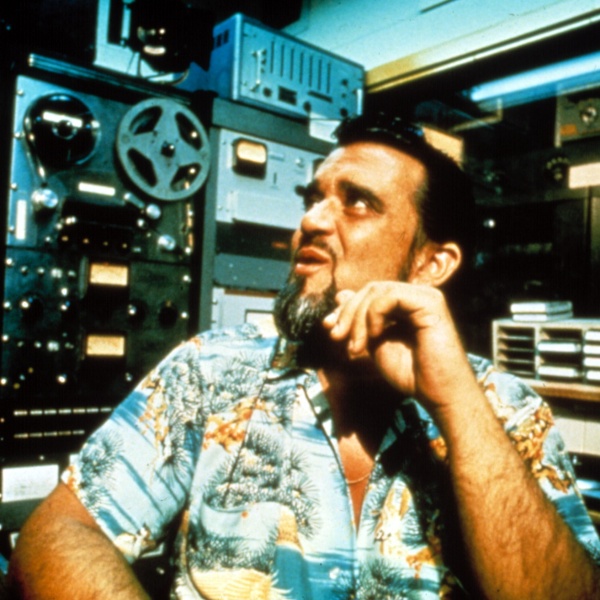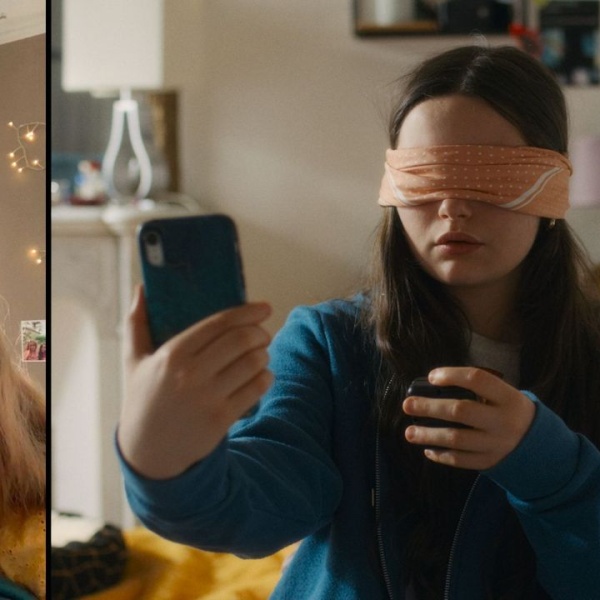We’re all just Greta Gerwig girls, living in Greta Gerwig’s world. The filmmaker has officially ascended to the A-list of directors with “Barbie,” her third directorial effort. The existential comedy adapted from the Mattel doll line is one of the biggest movies of 2023, and is set to cross the line to $1 billion at the global box office. Perhaps more importantly, it’s a legitimate cultural phenomenon, getting everyone talking about its feminist themes and launching memes and viral trends.
The success of “Barbie” is a turning point for Gerwig, who across three films, has only seen the budget and scale available to her grow at an exponential rate. Once best known as a character actor — including co-directing Joe Swanberg’s mumblecore film “Nights and Weekends” — Gerwig made her proper solo directorial debut with 2017’s “Lady Bird.” Inspired (but not based!) on her childhood growing up in Sacramento, California, the film starred Saoirse Ronan as a temperamental, immature teenager slowly learning to grow-up over the course of one dramatic school year, and was received rapturously as one of the best films of its year.
“Lady Bird” was a small indie with a $10 million production budget, and distributed by indie label A24 right as it was becoming the brand it is today. And the film was a success, more than earning back its budget back with a $79 million gross. For her next effort, Gerwig teamed with Sony Pictures and got handed a $40 million budget to adapt Louisa May Alcott’s “Little Women” for the big screen. Her version of the classic 1868 novel — again featuring Ronan in the lead — was another major success, grossing $218 worldwide.
And now, with “Barbie,” which she wrote with her romantic partner and frequent collaborator Noah Baumbach, Gerwig has directed a true blockbuster, and she’s venturing further into studio filmmaking because of it. Her next film is a two part adaptation of C.S. Lewis’ classic children’s fantasy novel series “The Chronicles of Narnia.” The movie’s will likely be even bigger than Barbie (budget-wise, at least), signaling the director is making a full career move into franchise cinema. Hopefully, she’ll continue to bring her signature vision to that brave new world.
At first glance, all three of the films Gerwig has so far released don’t have a ton of commonalities: a grounded teen dramedy, a period drama, and a fantasy adaptation of a toy line does not an obvious triple feature make. But Gerwig is a distinct writer, with a clear vision and style that permeates from every movie that she releases. Her films are stories about identity, where the leads wrestle with who they are, and take tentative steps to who they want to be. And Gerwig’s singular background, as a mumblecore actor and indie darling, informs how she puts together the films that carry her name. Read on for a list of the trademark elements that make a Greta Gerwig film, a Greta Gerwig film.
-
Female Coming of Age Journeys

Image Credit: A24 At their core, every movie Greta Gerwig has made so far is a coming-of-age story, focusing on girls finding themselves in a world that makes being a full-fledged and accomplished woman difficult. “Lady Bird,” her directorial debut about a Sacramento teenager struggling to grow into her own during her final year of high school, is an obvious example. For her sophomore feature, Gerwig adapted one of literature’s most iconic coming-of-age stories, Louisa May Alcott’s “Little Women.” Gerwig’s take emphasizes the individual journey of protagonist Jo, as she struggles to find herself as a writer in a world where women are expected to only be wives and mothers.
At first glance, the fantasy comedy “Barbie” doesn’t quite fit the storyline tropes established by Gerwig’s first two efforts. But the film is effectively the story of how the titular doll wakes up and grows into her own personhood, learning about what it means to be an adult woman in the real world and making the choice to take that leap.
Even prior to her directorial debut, this kind of arc was something Gerwig wrestled with onscreen. In 2012’s “Frances Ha,” which she co-wrote with Baumbach, Gerwig played the title character, an underemployed and immature dancer trying and failing to grow up from her co-dependent relationship with her best friend. Like Gerwig’s other films, it’s a story where the protagonist’s immaturity and faults are on full display, and the primary tension is whether she will be able to grow into, or at least figure out, the person she wants to be.
-
Actor-Focused

Although there’s always a clear leading woman in Gerwig’s films, the director also populates her movies with a large ensemble of ringers. “Lady Bird” had Laurie Metcalf, Tracy Letts, Lucas Hedges, Beanie Feldstein, Lois Smith, and Stephen McKinley Henderson supporting Saoirse Ronan’s star turn, while “Little Women” subbed them out for actors like Florence Pugh, Eliza Scanlen, Laura Dern, Meryl Streep, Bob Odenkirk, James Norton, Louis Garrel, and Chris Cooper (Letts also came back). “Barbie” featured an endless amount of talent beyond the stereotypical Barbie and Ken played by Margot Robbie and Ryan Gosling; just a short list includes Kate McKinnon, Issa Rae, Simu Liu, Michael Cera, America Ferrera, Rhea Perlman, Will Ferrell Will Ferrell, three stars of Netflix’s “Sex Education,” and Helen Mirren as the narrator.
Consistently, Gerwig’s work with her actors and the performances she receives from them tends to be one of the most acclaimed parts of her films — not necessarily surprising, for someone who started as an actor herself. In interviews, she’s described how she encourages her actors to incorporate their own performances into their characters, to acheive a naturalistic end result.
-
Comedy!

Image Credit: ©IFC Films/Courtesy Everett Collection “Barbie” is probably the most outright comedic film that Gerwig has directed; it’s not without its serious moments, but its primary goal is to give you a good time. “Lady Bird” is also a comedy-drama, with its serious moments spliced in with moments of cringe humor meant to make the audience squirm in their seat. “Little Women” tilted the balance slightly more towards drama, but still contains a wicked sense of humor that results in laugh out loud moments. And the films that Gerwig wrote with Baumbach, including “Frances Ha” and “Mistress America,” are outright comedies.
The comedic style that Gerwig brings to her films varies slightly: it’s a bit broader and more reference-based in “Barbie,” fitting for a big-budget studio movie. It’s primarily situational in “Lady Bird,” which mines a lot of discomfort from the lead’s poor decision making. That said, “Little Women” and “Lady Bird” aren’t necessarily stuffy or high-brow with their humor; they contain a lot of physical comedy, such as Amy cutting her hair horribly or Lady Bird intentionally falling out of her mother’s car.
-
Big Speeches

Image Credit: Courtesy Warner Bros. Gerwig’s dialogue is consistently sharp, and impressively varies from film to film: she nails mumbly teenagerisms in “Lady Bird,” but nails a convincingly 18th-century style in “Little Women.” “Barbie” isn’t nearly as heavily dialogue-based as her other two films, but still contains tons of fun wordplay and jokes in the script; simple things, like the slightly stilted and repetitive way that the Barbies and Kens speak in Barbie Land (Hi Barbie!), help provide a lot of personality to the film.
A writing tick prevelant in all of Gerwig’s work is her fondness for a big, powerful, climactic speech, one that doesn’t quite sum up the message of the film in its totality, but nonetheless feels like a mission statement about why Gerwig wanted to make the film in the first place.
“Lady Bird” famously ends with the title character leaving a long voicemail to her mother thanking her for everything she has done for her, and pondering the ways in which her hometown has shaped her into the person she is. “Little Women” features a speech from Jo about how women’s talents are underestimated by the world (this admittedly isn’t a Gerwig original; it was in the original Alcott text). And “Barbie’s” turns big speeches into a literal plot point when America Ferrera gives a powerful monologue about how hard it is to be a woman in society and live up to men’s standards, which proves powerful enough to snap Barbies out of their brainwashed state.
-
Saoirse Ronan and Timothee Chalamet (at Least Potentially)

Image Credit: Sony No, “Barbie” does not contain even a minute of footage featuring either Saoirse Ronan and Timothee Chalamet. But they were supposed to pop up in the large ensemble. Gerwig told Cinemablend shortly before the film premiered that Ronan and Chalamet were tapped to film short scenes for the film, but both ultimately had to pass due to scheduling conflicts. “It felt like doing something without my children,” Gerwig said. “I mean, I’m not their mom, but I sort of feel like their mom.”
Before “Barbie,” Ronan lead both of Gerwig’s films, playing tough and opinionated young women coming-of-age. Chalamet also appeared in both films, as Ronan’s love interest who never proves himself to be quite worthy of her. Just because they didn’t appear in “Barbie” doesn’t mean Gerwig’s relationship with them will stop; maybe Ronan will make the perfect Susan in “Chronicles of Narnia?”




